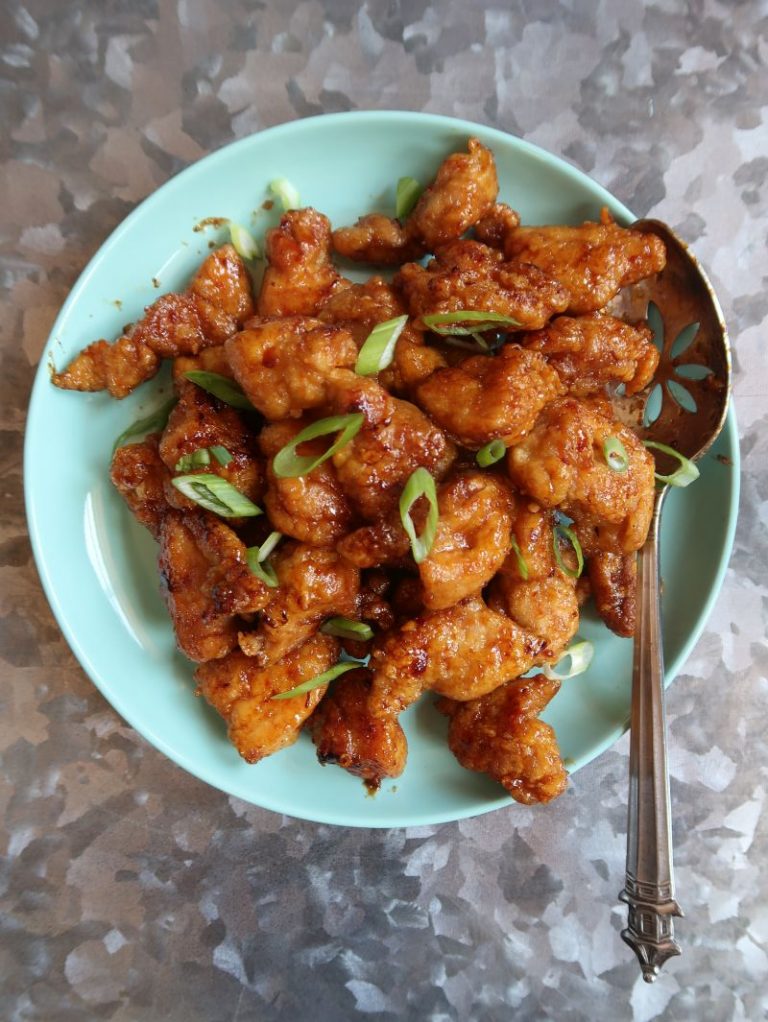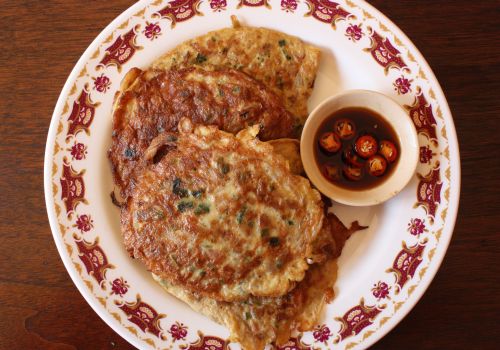
Years ago someone from Vietnam emailed me with kind words about my cookbooks, but the person also wrote that I cooked a lot of ‘old’ food. I took that as a compliment as well as a nudge. The person was looking for new ideas, not just classics and traditions. However, in producing recipes for mostly non-Vietnamese cooks, I know that people want the familiar comforts. If I stray too far, I may be labeled as being “Americanized”.
There’s nothing wrong with becoming or being Americanized. However, when it comes to food, the term is used to say that something is bad tasting with a certain level of finger pointing, as if the cook had sold out and abandoned authenticity and tradition.
What it Means to Be Americanized
Accusations of cultural wrongdoing keep us from cooking well because they keep us from understanding the human experience. I’ve written about my own dealings with imposter syndrome. But lately I’ve been thinking about what it means to be Americanized. I am American. I’m Vietnamese American. In Vietnamese, we describe Vietnamese American-ess as Mỹ Việt (American Vietnamese). The terms are flipped, which is to say that there’s Americanization happening. It’s okay. In fact, to negatively frame something as being “Americanized’ invalidates the experiences of people like me – who are Asian American. When I am in Vietnam, I’m not perceived as Vietnamese. I’ve been shaped and fed (literally and figuratively) by my life in the United States. That is true, honest, and authentic.

Lots has been pejoratively said about fortune cookies as a Japanese idea introduced to San Francisco in the late 1800s. General Tso’s chicken is unfamiliar to mainland Chinese eaters but a favorite in the States. It’s easy to laugh at and dismiss those popular foods but they have a level of authenticity and tradition of their own that’s built upon the experiences of the people that they’ve impacted.
Asian culture is not exotic but rather part of what makes the United States what it is. Negative Yelp reviews often default to saying that an Asian restaurant offers bland or meh “Americanized” food. Maybe the restaurant owners and staff like it that way or the cooks had a bad day. Or, the diner just did not enjoy the experience.
Americanized Asian foods can comfort and satisfy while telling the story of their makers and community. To spotlight the Asian American and Pacific Islander experience, here are a number of recipes for you to cook up.
Egg Foo Young
I’ve never ordered egg foo young at a restaurant because I grew up on frilly egg pancakes at home. I did not know it was a Chinese American dish. James Beard included it in his book, American Cookery, published in the 1970s. Beard grew up on food cooked by a temperamental Chinese cook named Let, who was employed by Beard's mother. Beard’s comments about egg foo young are pretty interesting reflections on what Asian food was like fifty years ago. I made Beard’s egg foo young recipe and it was delicious. You may also put egg foo young in bread for a St. Paul Sandwich.

Anyone questioning the legitimacy of sauce atop frilly egg pancakes should check out the tahu telur recipe for very tasty fried tofu and egg pancakes served with peanut sauce. As you can see below, the Indonesian egg pancakes look similar to Chinese egg foo young.

Orange Chicken
There’s nothing to laugh at about orange chicken. People love it. Panda Express executive chef Andy Kao, who was French trained, created the dish in 1987. In 2017 alone, Panda Express served up 80 million pounds of the deep fried chicken nuggets coated in tangy spicy sauce. The Chinese-American favorite has crossed cultural lines. I even made Snoop Dogg’s tasty orange chicken recipe (pictured at the top), which is a delicious reflection of how popular and mainstream orange chicken is.
If you’d rather fix an Asian American fried chicken recipe produced by folks of Asian heritage, make the crunchy spicy salty soy sauce fried chicken from Eric Kim’s Korean American cookbook. Here's an idea: Fry up Eric's chicken and coat it with Snoop Dogg's sauce!
Crab Rangoon
Two favorites – crab and cream cheese, tucked into a crispy fried wonton skin. Few can walk away from a plate of crab Rangoon. It's a Tiki bar classic from Trader Vic’s that has, over the years, spread in popularity all over. Chinese-American restaurants often include it on menus. Interestingly, Vietnamese restaurants in the Minneapolis-St. Paul area serve “cheese wontons” along with goi cuon rice paper rolls, classic banh mi, and sticky rice dumplings wrapped in banana leaf.
There are many iterations and you can’t go wrong. I’ve included many crab Rangoon recipes on this website because whenever I make them, I fall in love with them all over again. For example, there’s my updated version of the original crab Rangoon recipe by Vic Begeron.
I also devised a take for Viet-ish cream-cheese filled hoanh thanh chien. And, you could skip the frying and opt for baking up deviled sriracha crab Rangoon wonton cups (pictured above).
Chicken Lettuce Cups
When my mother first tried chicken lettuce cups at a Chinese restaurant in Southern California, she didn’t understand them. They were described as Chinese tacos. Mom didn’t get it but I assured her that the appetizer was popularized by Cecilia Chiang, a Shanghai-born successful restaurateur in San Francisco. Credited with introducing regional Chinese food to the United States, Chiang passed away a few years ago but her squab and chicken lettuce cup legacy endures all over the country. Her son is part of the PF Chang’s empire. Of course, chicken lettuce cups are on the restaurant menu (there’s a “family secret” in the preparation). Hand chopping boneless chicken is laborious so I backed off the animal protein in my chicken, tofu and shiitake lettuce cup recipe.

If we turn up our noses or turn away from “Americanized” Asian food, we wouldn’t allow Viet-Cajun seafood boils or California rolls into our lives. That would be sad. Food does not have to have generations of history to offer up the authentic human experience of its maker. Food just has to taste good, true and filled with intention.
What are your favorite Asian American dishes?



















Dana says
Wonderful perspective! We have a rich and abundant dining world because of the opportunities to explore foods from many countries. Thank you for sharing
Andrea Nguyen says
You are very welcome, Dana!
Wlliam says
Vietnamese food became available to me in the 1980's when Viet people were located in our area due to the jobs, low cost of housing, and Viet restaurants were suddenly a thing. I happened to walk into a really good one and ate there 2-3 days a week where they taught me about Viet cuisine, culture, history...a really good experience from very nice children of the owners. So that was 35 years ago and I have to say that the old school flavor is absent from most restaurants. Luckily they taught me some recipes and tricks such as charred caramel water, so I can make a pretty good substitute. Not great. So Americanization is a thing. My friend Patrick Tran explained to me...just go to Vietnam. Go! I will.
Andrea Nguyen says
Yes, visit Vietnam when you can. Thanks for sharing your experience, William.